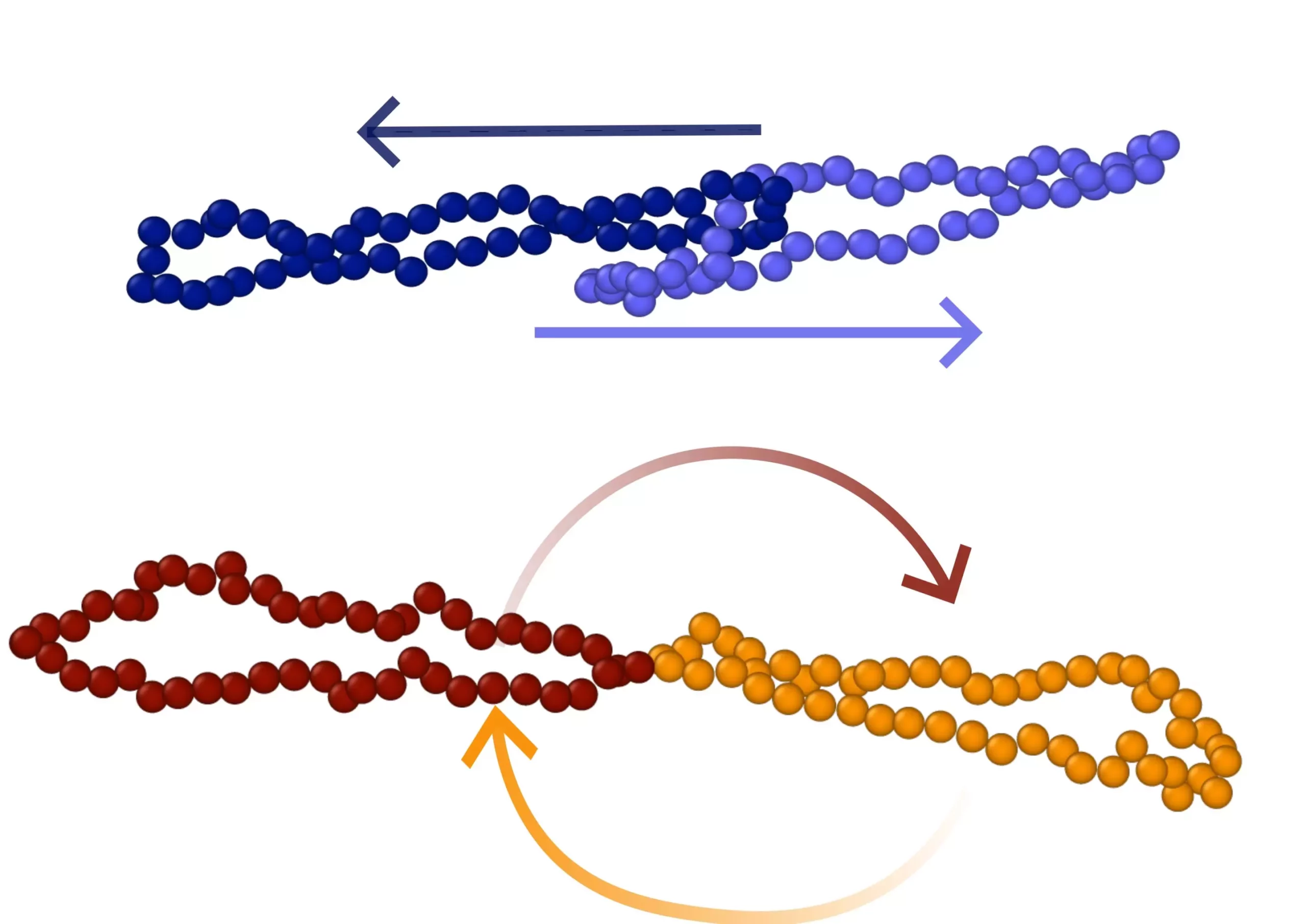Fluid shear, a phenomenon where fluid layers slide over each other under shear forces, plays a crucial role in various scientific fields, especially in rheology. Rheology, the study of flow behaviors of materials like liquids and soft solids, focuses on understanding the response of matter to shear forces.
In recent research, a new approach has emerged, focusing on the impact of polymer topology on fluid shear behavior. This study involves the use of ring polymers, which are macromolecules consisting of closed loops without free ends. The experiment considered two types of connected ring pairs: bonded rings (BRs) and polycatenanes (PCs), each having distinct molecular structures.
The research revealed unexpected dynamic patterns in ring polymers under shear forces. The two types of ring polymers, BRs, and PCs, exhibited unique behaviors that differed significantly from traditional linear, star, or branched polymers. The study identified gradient-tumbling in BRs and slip-tumbling in PCs as distinct modes of motion influenced by polymer topology and hydrodynamic interactions.
The distinct tumbling behaviors of BRs and PCs have significant implications for the mechanical properties of the fluid solution. BRs were found to release internal stresses through tumbling, while PCs stored stresses permanently, resulting in higher viscosity. This difference in dynamic behavior suggests that the tumbling motions and structures of ring polymers could influence the shear viscosity of concentrated solutions or polymer melts.
Further experimental and theoretical studies are necessary to explore the implications of polymer topology on fluid shear behavior. The interplay between hydrodynamics and polymer architecture highlighted in this study underscores the complexity of fluid dynamics in the presence of topologically modified polymers. Collaborations between research institutions like the University of Vienna, the Sharif University of Technology, and the International School of Advanced Studies are essential for advancing our understanding of these intricate systems.


Leave a Reply